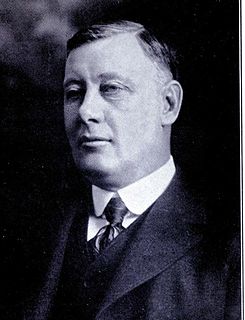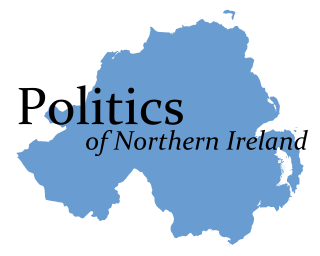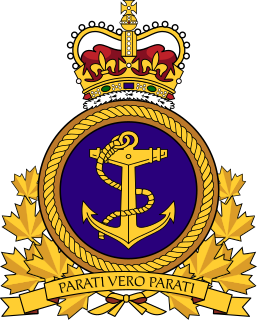
The Department for Environment, Food and Rural Affairs (Defra) is the government department responsible for environmental protection, food production and standards, agriculture, fisheries and rural communities in the United Kingdom of Great Britain and Northern Ireland. Concordats set out agreed frameworks for co operation, between it and the Scottish Government, Welsh Government and Northern Ireland Executive, which have devolved responsibilities for these matters in their respective nations.

Sir Charles Edmund Kingsmill was an Admiral, the first director of the Department of the Naval Service of Canada. After retiring from a career in the Royal Navy, he played a prominent role in the establishment of the Royal Canadian Navy (RCN) in 1910. Along with Walter Hose, he is considered the father of the Royal Canadian Navy.
The Minister of Fisheries, Oceans, and the Canadian Coast Guard, previously the Minister of Fisheries and Oceans, is the minister of the Crown in the Canadian Cabinet who is responsible for supervising the fishing industry, administrating all navigable waterways in the country, and overseeing the operations of the Canadian Coast Guard and the Freshwater Fish Marketing Corporation.

The Canadian Coast Guard is the coast guard of Canada. Formed in 1962, the coast guard is tasked with marine search and rescue, communication, navigation and transportation issues in Canadian waters, such as navigation aids and icebreaking, marine pollution response and providing support for other Canadian government initiatives. The coast guard operates 119 vessels of varying sizes and 22 helicopters, along with a variety of smaller craft. The Canadian Coast Guard is headquartered in Ottawa, Ontario, and is a special operating agency within Fisheries and Oceans Canada.

Edwin Denby was an American lawyer and politician who served as Secretary of the Navy in the administrations of Warren G. Harding and Calvin Coolidge from 1921 to 1924. He also played a notable role in the infamous Teapot Dome scandal which took place during the Harding presidency. He was the son of Charles Harvey Denby, grandson of Graham N. Fitch, brother of Charles Denby, Jr., and uncle of dance critic Edwin Orr Denby.

Ernest Lapointe, was a Canadian lawyer and politician. A member of Parliament from Quebec City, he was a top adviser to Prime Minister William Mackenzie King, especially on issues relating to legal affairs, Quebec and French-speaking Canada.

Louis-Philippe Brodeur, baptised Louis-Joseph-Alexandre Brodeur was a Canadian journalist, lawyer, politician, federal Cabinet minister, Speaker of the House of Commons of Canada, and puisne justice of the Supreme Court of Canada.

The Minister for Agriculture, Food and the Marine is the senior minister at the Department of Agriculture, Food and the Marine in the Government of Ireland. Historically, the agriculture portfolio has gone under a number of different names; the holder has often borne the title of simply Minister for Agriculture.

Fisheries and Oceans Canada, frequently referred to as Department of Fisheries and Oceans (DFO), is the department within the government of Canada that is responsible for developing and implementing policies and programs in support of Canada's economic, ecological and scientific interests in oceans and inland waters. Its mandate includes responsibility for the conservation and sustainable use of Canada's fisheries resources while continuing to provide safe, effective and environmentally sound marine services that are responsive to the needs of Canadians in a global economy. The stated vision of the department is "Excellence in service to Canadians to ensure the sustainable development and safe use of Canadian waters."

The Naval Service is the maritime component of the Defence Forces of Ireland and is one of the three branches of the Irish Defence Forces. Its base is in Haulbowline, County Cork.

Charles Colquhoun Ballantyne, was a Canadian politician.

The Air Board, Canada's first governing body for aviation, existed from 1919 to 1923. The Canadian government established the Air Board by act of Parliament on June 6, 1919, with the purpose of controlling all flying within Canada. Canada was the first country to legislate and implement rules governing the entire domain of aviation.
The Department of Militia and Defence was the department responsible for military land forces in Canada from 1906 to 1921.

HMCS Laurentian was a commissioned patrol vessel of the Royal Canadian Navy that served in the First World War and postwar until 1919. Prior to Canadian naval service, the ship was used by the Canada Customs Preventative Service. Following the war, Laurentian was transferred to the Department of Marine and Fisheries and used as a buoy tender and lighthouse supply vessel until taken out of service in 1946 and broken up for scrap in 1947.

HMCS Curlew was a commissioned minesweeper and patrol vessel of the Royal Canadian Navy (RCN) that served in the First World War. Constructed in Ontario in 1892, Curlew was initially a Canadian government fisheries patrol vessel on the East Coast of Canada. In 1912, the ship was fitted as a minesweeper and in 1914, joined the RCN. Curlew spent the entire war on the East Coast of Canada. Following the war, the ship was taken out of service and sold in 1921.

The Department of Agriculture, Environment and Rural Affairs (DAERA) is a government department in the Northern Ireland Executive, the devolved administration for Northern Ireland. The minister with overall responsibility for the department is the Minister of Agriculture, Environment and Rural Affairs. The department was called the Department of Agriculture and Rural Development between 1999 and 2016 and was previously known as the Department of Agriculture for Northern Ireland or the Ministry of Agriculture. The department's Permanent Secretary is Noel Lavery.
The Minister of the Naval Service (Canada) was the federal government minister charged with oversight of the Royal Canadian Navy.

The United States Army Transport Service (ATS) operated Army transport ships for both troop transport and cargo service between United States ports and overseas posts. This service is often confused with the Army Transportation Service, created in France in 1917 to manage American Expeditionary Forces transport, renamed Transportation Corps 12 November 1918 still limited to France, becoming a general service under the Quartermaster Corps responsible for land and water transport, then briefly a name applied to a larger organization in the early days of World War II, and becoming the separate Transportation Corps effective 31 July 1942.

The Irish Conservation Box (ICB) or Biologically Sensitive Area (BSA) is a Marine Protected Area stretching along the southwest coast of Ireland. The ICB was defined based on advice from marine biologists, and following review by European Union fisheries ministers of the Common Fisheries Policy, as a means to safeguard the "biological sensitivity and commercial importance" of the waters around Ireland.
At the onset of Confederation in 1867, political planners in Canada and Great Britain realized that Canada had substantial maritime interests to protect. Boasting the fourth largest Merchant Marine in the world, and deriving the majority of its foreign capital through maritime trading should have been enough to persuade the Canadian government of the strategic importance of the seas. Adding the fact that Canada was one of the great shipbuilding and ship-owning countries of the world, and it soon made the need for maritime protection obvious.
















